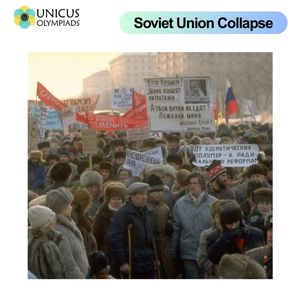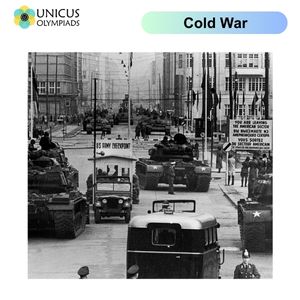Why Did the Soviet Union Collapse?
The collapse of the Soviet Union in 1991 marked the end of one of the most powerful and influential empires in modern history. It was a significant event that reshaped global politics, leading to the dissolution of the world’s largest communist state and the emergence of 15 independent republics. The fall of the Soviet Union was not the result of a single event but a combination of internal weaknesses, economic stagnation, and external pressures that accumulated over several decades. This article explores the primary factors that led to the collapse of the Soviet Union, including political, economic, and social challenges, as well as the role of key historical figures like Mikhail Gorbachev.

1. Political and Ideological Factors
The Soviet Union was founded in 1922 as a socialist state based on Marxist-Leninist principles. Over the decades, however, the political system became increasingly rigid, and the ideological foundation of the regime began to erode. Several key political and ideological factors contributed to the collapse of the Soviet state.
1.1 Centralized Power and Authoritarian Rule
- Authoritarian Leadership: The Soviet Union was characterized by a highly centralized government under a single party, the Communist Party of the Soviet Union (CPSU). The leadership was often authoritarian, with little room for political dissent or opposition. By the time of the Soviet collapse, power was concentrated in the hands of a small group of party elites, with little accountability to the general population.
- Lack of Political Reforms: Despite the need for political reform, successive Soviet leaders, including Joseph Stalin, Leonid Brezhnev, and their successors, resisted meaningful political changes. The absence of democratic processes, political pluralism, and a free press led to widespread disillusionment among the population, particularly the younger generation.
1.2 Gorbachev’s Reforms: Perestroika and Glasnost
- Perestroika (Restructuring): In the mid-1980s, Mikhail Gorbachev, the General Secretary of the Communist Party, attempted to reform the Soviet system through a series of political and economic reforms. His policy of perestroika aimed to restructure the Soviet economy by introducing elements of market mechanisms and decentralizing economic decision-making. However, these reforms were insufficient to address the underlying economic stagnation and were often poorly implemented.
- Glasnost (Openness): Gorbachev’s glasnost policy encouraged greater openness and transparency in government. For the first time, Soviet citizens were allowed to discuss political and social issues openly, and the government loosened its grip on the media. While glasnost gave the Soviet people a greater voice, it also exposed the regime’s corruption, inefficiency, and human rights abuses, leading to increased criticism and demands for more radical reforms.
1.3 Nationalism and Ethnic Tensions
- Rise of Nationalism: The Soviet Union was a multi-ethnic state, consisting of more than 100 different ethnic groups. Over time, many of the republics within the USSR began to assert their nationalist identities and demand greater autonomy. Nationalism grew particularly strong in the Baltic States (Estonia, Latvia, and Lithuania), Georgia, Armenia, and Ukraine. These republics began to push for independence, and Gorbachev’s failure to manage ethnic tensions weakened the unity of the Soviet Union.
- The Baltic States and the Breakaway Movements: The Baltic States were among the first to declare independence from the Soviet Union. In 1990, Lithuania became the first republic to declare its independence, followed by Latvia and Estonia. The Soviet Union’s inability to suppress these independence movements further eroded its control over its republics.
2. Economic Factors
Economic stagnation was one of the most significant contributing factors to the collapse of the Soviet Union. Despite being one of the world’s largest economies, the Soviet Union faced numerous structural problems that ultimately led to its downfall.
2.1 Centralized Planned Economy
- Economic Inefficiency: The Soviet Union operated under a centralized planned economy, where the state controlled production, distribution, and pricing of goods and services. While this system was initially successful in rapidly industrializing the country, it became increasingly inefficient over time. The absence of market competition, innovation, and incentives for efficiency led to stagnation in production and widespread shortages of consumer goods.
- Declining Agricultural Sector: The agricultural sector in the Soviet Union was highly centralized and inefficient. Despite attempts to modernize agriculture through collective farming, the system was plagued by low productivity and poor management. The Soviet Union became increasingly reliant on grain imports, which weakened its economy.
2.2 The Burden of the Arms Race
- Military Spending: The Soviet Union’s extensive military spending, particularly during the Cold War, placed a heavy burden on its economy. The arms race with the United States, including the development of nuclear weapons and the Soviet military presence in Eastern Europe, drained resources that could have been used for economic development and domestic needs.
- Afghan War (1979-1989): The Soviet invasion of Afghanistan in 1979 further strained the economy. The war was costly, both in terms of military expenditure and human lives. The Soviet Union’s inability to achieve a decisive victory in Afghanistan and the growing unpopularity of the war only contributed to the decline of the regime’s legitimacy.
2.3 Economic Reforms and Failure of Perestroika
- Perestroika’s Failures: Gorbachev’s economic reforms, known as perestroika, failed to produce the desired results. Attempts to introduce market-based reforms into the Soviet economy were hindered by resistance from entrenched bureaucratic elites and the lack of experience with market mechanisms. Instead of improving the economy, the reforms often caused further disruption, leading to hyperinflation, shortages, and an erosion of public confidence in the government.
3. External Factors: The Cold War and Global Pressures
The Cold War rivalry with the United States and its allies added external pressure to the Soviet Union, contributing to its eventual collapse. The arms race, the cost of maintaining a global empire, and the growing dissatisfaction with Soviet governance all played a role in weakening the USSR’s position on the global stage.
3.1 The Cold War Rivalry
- The United States and the Arms Race: The Cold War arms race with the United States placed tremendous pressure on the Soviet economy. The cost of maintaining military parity with the US, especially in terms of nuclear weapons and military technology, was unsustainable for the Soviet economy, which was already struggling with inefficiency and stagnation.
- Western Influence: The success of Western capitalist democracies, particularly the United States and Western Europe, provided a stark contrast to the failures of the Soviet system. The appeal of democratic governance, consumer goods, and economic prosperity in the West inspired many within the Soviet Union and its satellite states to demand reform.

3.2 The Influence of Eastern Europe and the Fall of the Berlin Wall
- The Fall of Communism in Eastern Europe: In the late 1980s, the Soviet Union began to lose its grip on Eastern Europe. Countries like Poland, Hungary, and Czechoslovakia saw popular uprisings against communist governments, inspired by the growing push for reform and democracy. The 1989 fall of the Berlin Wall marked the symbolic end of Soviet control over Eastern Europe, which had a ripple effect on the Soviet Union itself.
- The Collapse of Communist Regimes: By 1989-1990, communist regimes in Eastern Europe had crumbled, and many of these countries began to transition to democratic governments. This wave of change further weakened the Soviet Union’s influence and highlighted the inherent weaknesses of its political and economic systems.
4. The Role of Mikhail Gorbachev
Mikhail Gorbachev, the last leader of the Soviet Union, played a central role in both the reform process and the eventual collapse of the Soviet state. His policies of perestroika and glasnost were intended to revive the Soviet Union, but they ultimately contributed to its disintegration.

4.1 Perestroika and Glasnost
- Perestroika: Gorbachev’s perestroika reforms aimed to restructure the Soviet economy by introducing limited market reforms, decentralizing decision-making, and encouraging private entrepreneurship. However, these reforms were poorly executed and caused economic instability, rather than the anticipated recovery.
- Glasnost: Glasnost, or “openness,” was a policy that aimed to increase transparency and freedom of expression within the Soviet Union. While it allowed for greater public debate and criticism of the government, it also exposed deep flaws in the political system, undermining the authority of the Communist Party and contributing to public disillusionment.
4.2 The August Coup and the End of the Soviet Union
- The August Coup (1991): In August 1991, hardline communist officials attempted a coup to overthrow Gorbachev and halt his reforms. The coup failed, but it further destabilized the Soviet system. Following the coup, republics like Ukraine, Belarus, and the Baltic States declared independence, and Gorbachev’s authority collapsed.
- The Collapse of the Soviet Union: By December 1991, the Soviet Union formally dissolved, and 15 republics gained independence. The fall of the USSR marked the end of the Cold War and the emergence of a new world order dominated by the United States as the sole superpower.
Conclusion
The collapse of the Soviet Union was the result of a combination of internal political, economic, and social factors, along with external pressures from the Cold War and global political shifts. The failure of Gorbachev’s reforms, economic stagnation, and the rise of nationalist movements within the republics all contributed to the disintegration of the Soviet state. The collapse marked the end of the Cold War and had profound implications for global politics, as it led to the emergence of new independent states and the reshaping of the global order. The Soviet Union’s collapse remains one of the most significant events of the 20th century, influencing the trajectory of international relations for decades to come.




